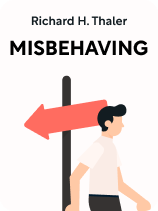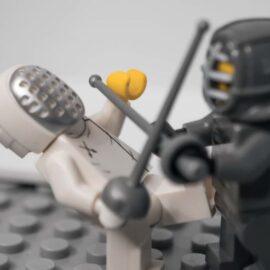

This article is an excerpt from the Shortform book guide to "Misbehaving" by Richard H. Thaler. Shortform has the world's best summaries and analyses of books you should be reading.
Like this article? Sign up for a free trial here.
What are “nudges” in behavioral economics? How does nudging influence a consumer’s decision?
Famous economist Richard H. Thaler believes that behavioral economics has important practical implications in everyday life. He believes it can help influence consumers for good with nudges.
Find out what it means to “nudge” people in the world of finance.
How “Nudging” Can Improve Consumers’ Decisions
Thaler explains that in his book Nudge, coauthored with Harvard Law professor Cass Sunstein, he argued that insights from behavioral economics can help us “nudge” consumers toward better choices, as measured by their preferences. In other words, behavioral economics can teach us how to help consumers make decisions that they want to make, but struggle to. In this article, we’ll examine two such “nudges” in behavioral economics that have been implemented in the real world: Thaler’s Save More Tomorrow plan and his reformulated letters to delinquent taxpayers in the UK.
Nudge #1: The Save More Tomorrow Plan
Thaler’s first nudge addressed a widespread problem in the US in the mid-1990s: Consumers were saving less for retirement than they wished to, by their own reports. The normal individual retirement accounts (IRAs), Thaler explains, had several problems. First, they required employees to fill out byzantine forms, selecting their interest rate and stock-to-bond allocations to opt into these retirement accounts. Second, they forced employees to see their retirement money taken out of their paycheck. And finally, they required employees to dedicate money to their retirement funds in the present, when humans have the weakest self-control, rather than deciding to add more to their retirement funds in the distant future.
(Shortform note: Perhaps as a result of these IRAs in the 1990s and 2000s, personal savings rates in the US reached a low of around 1% of disposable income in July 2005. And although these rates rose consistently in the 2010s, averaging around 9% of disposable income, data suggest that as of 2023, Americans are saving below 4% of their disposable income. Thus, because experts generally recommend saving 10-15% of disposable income, it seems that Americans are again saving too little for retirement.)
Consequently, Thaler developed the Save More Tomorrow plan to address these three problems. Rather than requiring employees to fill out elaborate forms, Save More Tomorrow included an automatic enrollment. Rather than forcing employees to see the money leave their paycheck, Save More Tomorrow allowed them to increase their retirement rates after receiving a raise, making it feel like they weren’t losing money. And rather than requiring employees to change their retirement rates now, the plan allowed them to automatically increase their rates in the future. Though it took time for Save More Tomorrow to catch on, Thaler reports that by 2011, 51% of employers offered some variation of it, and by 2013, it was estimated to help US employees save an additional $7.6 billion annually.

———End of Preview———
Like what you just read? Read the rest of the world's best book summary and analysis of Richard H. Thaler's "Misbehaving" at Shortform.
Here's what you'll find in our full Misbehaving summary:
- Why the theory of traditional economics rests on a faulty foundation
- How consumers actually behave in economic situations
- Real-world cases of behavioral economics helping consumers






